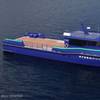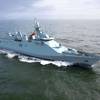Product Tanker Market Looks Up
The product tanker market registered a robust recovery in the fourth quarter of 2018, partially reversing the downward trend observed in the first nine months of the year, said Capital Product Partners.
The Marshall Islands' tanker company said in a stock exchange annoucement that the beginning of the quarter was weak in line with the previous quarters, as rates hovered close to historically low levels, but the market gained momentum from early November onwards.
In the West, the product tanker market experienced strong gains as earnings for MR product tankers on the benchmark transatlantic trade and from the U.S. Gulf reached three-year highs. The increase in rates was partly attributable to a surge in crude tanker rates, which has had a positive knock-on effect on product tankers, with a high number of LR2 vessels shifting from clean trade to dirty products or crude and therefore, reducing tonnage availability in the product tanker market.
In addition, the stronger crude market significantly reduced cargo poaching by newbuilding crude tankers on clean routes. Aside from the positive spillover effects from the crude market, the product tanker market was bolstered by seasonally stronger demand due to increased heating oil consumption, while adverse weather conditions reduced tonnage availability.
Furthermore, refinery outages in Brazil and Mexico required substantial volumes to be moved with product tankers to meet demand, which contributed to the positive trend.
Period activity was limited during the quarter. However, period rates improved on the back of the recovery in the spot market.
On the supply side, the orderbook remained close to historically low levels. As at the end of the fourth quarter of 2018, the MR product tanker orderbook was estimated by analysts to stand at approximately 7.8% of the current worldwide fleet.
In addition, product tanker deliveries continued to experience significant slippage during 2018, as 33.8% of the expected MR and handy size tanker newbuildings were not delivered on schedule.
Looking ahead, analysts estimate that product tanker deadweight demand growth will increase to 3.2% in 2019 from 2.3% in 2018, boosted by refinery capacity additions and on the back of potential positive impact from the IMO 2020 sulfur regulation.
The product tanker fleet is projected by analysts to expand by 2.6% in 2019.














